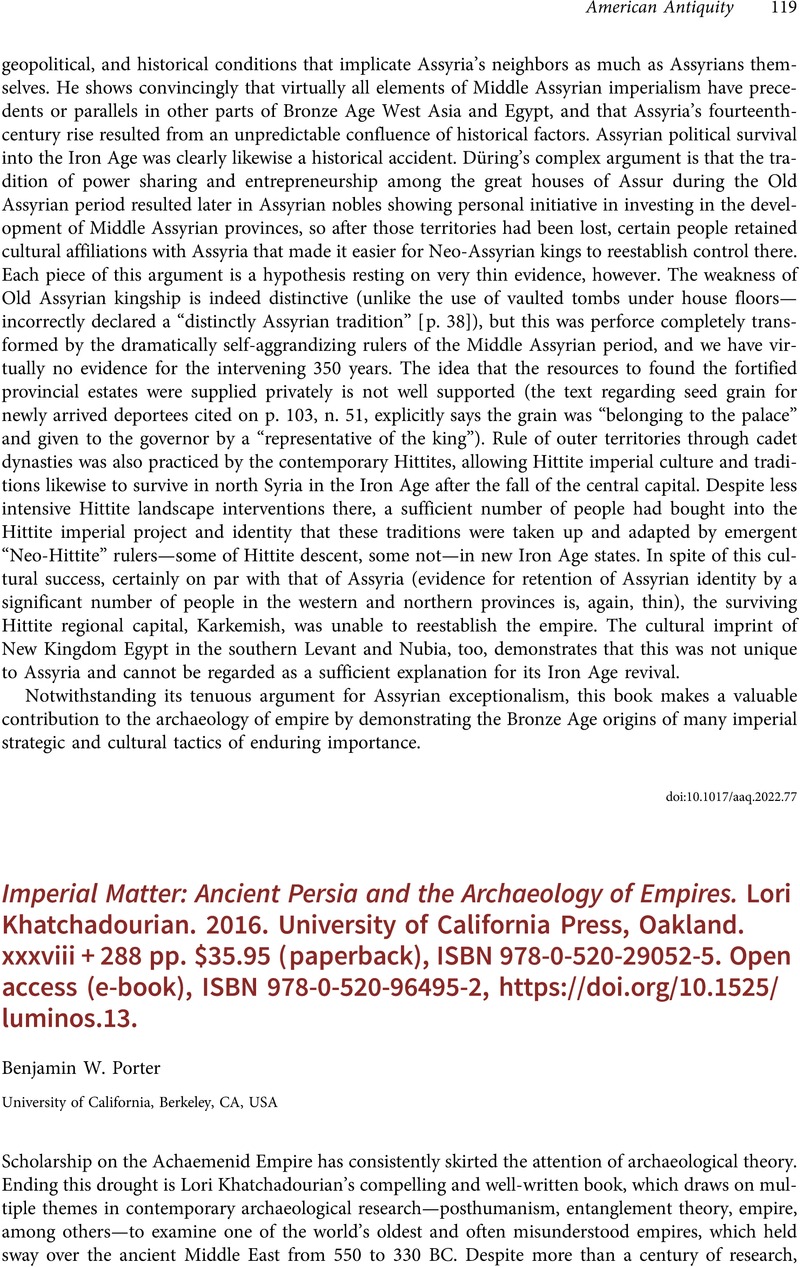No CrossRef data available.
Article contents
Imperial Matter: Ancient Persia and the Archaeology of Empires. Lori Khatchadourian. 2016. University of California Press, Oakland. xxxviii + 288 pp. $35.95 (paperback), ISBN 978-0-520-29052-5. Open access (e-book), ISBN 978-0-520-96495-2, https://doi.org/10.1525/luminos.13.
Review products
Imperial Matter: Ancient Persia and the Archaeology of Empires. Lori Khatchadourian. 2016. University of California Press, Oakland. xxxviii + 288 pp. $35.95 (paperback), ISBN 978-0-520-29052-5. Open access (e-book), ISBN 978-0-520-96495-2, https://doi.org/10.1525/luminos.13.
Published online by Cambridge University Press: 09 December 2022
Abstract
An abstract is not available for this content so a preview has been provided. Please use the Get access link above for information on how to access this content.

- Type
- Review
- Information
- Copyright
- Copyright © The Author(s), 2022. Published by Cambridge University Press on behalf of the Society for American Archaeology


